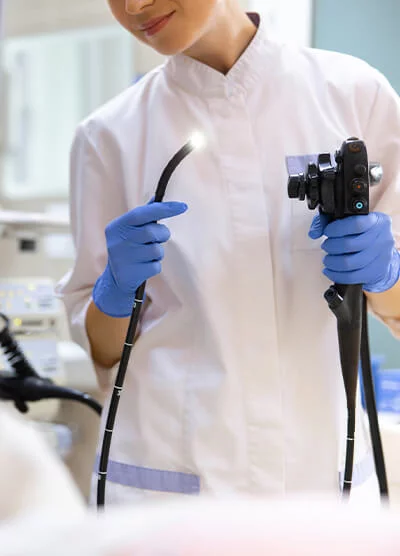Shed Light On Your Symptoms
What Is an Upper GI Endoscopy?
An upper endoscopy is a minimally invasive examination of the upper GI tract, which consists of the esophagus, stomach, and the upper part of the small intestine (duodenum). This procedure is used to evaluate and seek potential causes for abdominal pain, nausea, swallowing problems, stubborn heartburn, suspected ulcers, other forms of inflammation, suspected tumors, as well as to identify and correct bleeding in these areas.
How Do I Prepare for My Procedure?
Prior to your upper endoscopy, your doctor needs to know about any medical conditions you have, including heart and lung conditions, diabetes, pregnancy, or allergies to any medication. If you have a condition that requires antibiotics before surgical procedures, your doctor needs to know. However, it is very seldom that antibiotics are needed before an endoscopy. The stomach must be empty of food, usually for at least 8 hours, and empty of even simple fluid for 2 hours or more before the endoscopy.
How Is the Endoscopy Performed?
A physician and endoscopy staff will perform the procedure. An IV will be started and sedation medication administered before the endoscope is passed into the mouth, down the esophagus, and into the stomach and duodenum. A video camera in the scope transmits real-time, detailed images to a monitor for your doctor to watch and periodically take still photos of any findings. During an upper endoscopy, your doctor may take samples (biopsies) of tissue. Depending on the situation, other procedures might be performed, such as treating causes of bleeding, dilating areas of intestinal narrowing, or the placement of feeding tubes.

